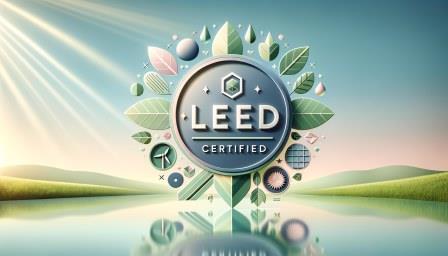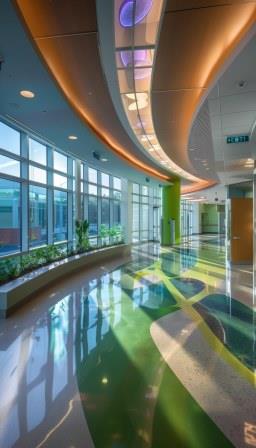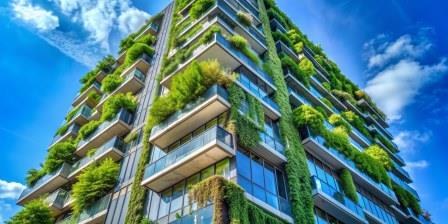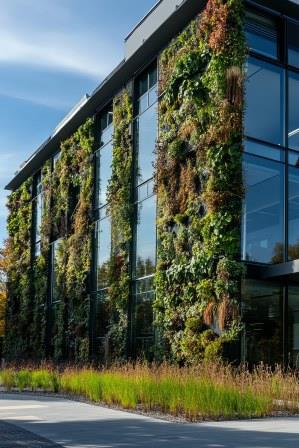

Printable PDF version
Subscribe to our newsletter
LEED 5 is Coming
Office-Residential Conversions
Soft Landings
Construction
Management Specialists
Los Altos, CA
(650) 386-1728
San Francisco, CA
(415) 981-9430
Orinda, CA
(415) 981-9430
Sacramento, CA
(415) 872-0996
San Diego, CA
(858) 886-7373
Los Angeles, CA
(424) 343-2652
Seattle, WA
(206) 571-0128
Phoenix, AZ
(408) 868-6326
Portland, OR
(415) 359-5207
Dublin, Ireland
+353 86-600-1352 (Europe office)
www.TBDconsultants.com
LEED (Leadership in Energy and Environmental Design) started setting the standard for healthy and sustainable buildings from its introduction in August 1998, and it has been updated a number of times since then. The last major update, LEED 4, was in 2014. LEED 4.1, that was introduced in beta form in February this year, never got voted on and is now being sidestepped by LEED 5. With the growing effects of climate change becoming more visible, reflected in the development of new technologies and the increasing difficulty of getting insurance for buildings, LEED was no longer showing itself in a leadership role. However, LEED 5 is aiming to reset the bar and restore LEED as a real driver for change as we face the unpredictability of climate conditions and address some cultural changes.

LEED 5 has now gone through its public comment period and is expected to be released in final form by early 2025. It focuses on reducing carbon emissions from a variety of sources and reducing emissions to near-zero by 2050, and that goal accounts for 50% of the available points. Improving the wellbeing of occupants, including addressing equity and inclusivity issues, accounts for a further 25% of the points, and protecting the ecosystem covers the remaining 25%. It is seen as being a bigger change than the move from LEED 3 to 4 as the rating system plays catchup and sets new goals to address the climate crisis as we start moving from not harming the environment to trying to help it. The system is designed to be both practical and efficient, while simplifying the calculations needed to achieve certification.
LEED 5 starts out with three prerequisites, Assessment for Climate Resilience (looking at current and future potential hazards for the building and site), Social Impact Assessment (related to community well-being, inclusivity, and diversity), and Operational Carbon Projection (comparing the project's goals with a provided baseline or a baseline from information obtained from the local utility). Those prerequisites set the tone for what the document is trying to achieve.

Generally speaking, the credits and prerequisites have been reorganized and expanded from what was in LEED 4.1. The 'Location and Transportation' section and the 'Sustainable Sites' section are two of the divisions that show no major changes, although the previous 'Light Pollution Reduction' credit has been expanded to become a 'Light-Pollution and Bird-Collision-Reduction' credit. The 'Water Efficiency' section has a new credit related specifically to 'Water Reuse'.
The 'Energy and Atmosphere' section is where we start to see some serious changes. There's a new prereq titled 'Operational Carbon Projection and Decarbonization Plan', and credits for 'Electrification' and for 'Reduced Peak Thermal Loads'. The 'Grid Harmonization' credit of version 4.1 has grown along with technology changes so that it is now a credit titled 'Grid-Interactive'. In June, the Department of Energy released its new definition for what constitutes a zero-emissions building. That definition says that the building must be highly energy efficient, free of on-site emissions from energy use, in other words it must be all-electric, and that electric power must come from clean energy sources. The USGBC said that it will align the final version of LEED 5 with that definition, although it is basically aligned already.

In 'Materials and Resources', what was previously a prereq for 'Storage and Collection of Recyclables' has now become 'Planning for Zero Waste Operations'. LEED 4 introduced the EPD (Environmental Product Declaration) which was basically a life cycle assessment for a particular material showing that it's better than average, and now there's a prereq for 'Assess Embodied Carbon'.
With the Indoor Environmental Quality section, what had been a prereq for 'Environmental Tobacco Smoke Control' is now 'No Smoking or Vehicle Idling', and there are new credits for 'Occupant Experience' (which expands on the old 'Exterior Views' credit), 'Enhanced Building Accessibility' (incorporating pilot credits such as inclusive design, all-gender restrooms, and safety first), 'Resilient Spaces' (that addresses changing climate conditions, etc.), and a 'Connecting with Nature'/Biophilia credit (that aims at bringing direct and indirect experience of nature into the building).
The old 'Innovation' and 'Regional Priorities' sections have been combined as 'Project Priorities and Innovation', and the previous 'Regional Priority' and 'Innovation' credits have been combined as a 'Project Priorities' credit.

Each prereq and credit is tagged with one or more of the rating system's goals or 'impact area alignments' that LEED 5 targets. Those goals are 'decarbonization', 'quality of life', and 'ecological conservation and restoration'. Design teams will be provided with means for assessing methodologies for achieving the carbon emission, climate resilience, and social equity goals. There will also be a LEED Impact Report for tracking and improving performance over time.
Another major change to the rating system is that involved with achieving Platinum-level certification. Instead of simply achieving the target number of points, there are now also specific decarbonization credits that must be met. These include the building being all-electric and using renewable energy, along with meeting the embodied carbon reduction goals.
As usual, the rating system will have versions for Building Design and Construction, Interior Design and Construction, Operations and Maintenance, Neighborhood Development, and Homes. In addition, the US Green Building Council also plans to issue updates every 5 years for the foreseeable future.
Office-Residential Conversions
Empty office space and a desperate need for housing might sound like a neat combination of problem and solution. But here we look at some of the issues involved with turning offices into housing.
A soft landing is the ideal outcome after a recovery from a period of high inflation, and here we look at where we are as we make that final approach to touchdown.
Design consultant: Katie Levine of Vallance, Inc.